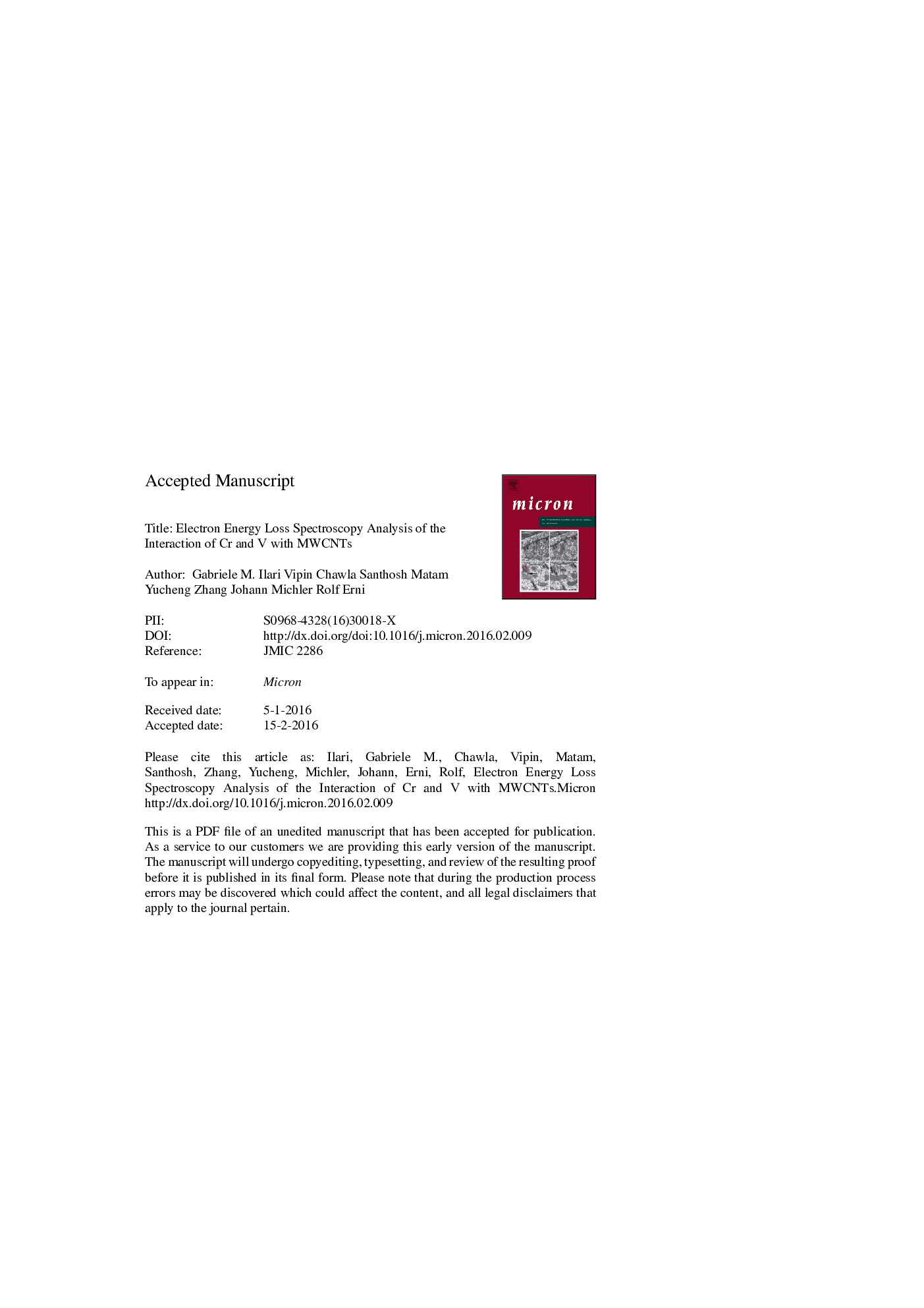| کد مقاله | کد نشریه | سال انتشار | مقاله انگلیسی | نسخه تمام متن |
|---|---|---|---|---|
| 7986434 | 1515132 | 2016 | 18 صفحه PDF | دانلود رایگان |
عنوان انگلیسی مقاله ISI
Electron energy loss spectroscopy analysis of the interaction of Cr and V with MWCNTs
دانلود مقاله + سفارش ترجمه
دانلود مقاله ISI انگلیسی
رایگان برای ایرانیان
کلمات کلیدی
موضوعات مرتبط
مهندسی و علوم پایه
مهندسی مواد
دانش مواد (عمومی)
پیش نمایش صفحه اول مقاله

چکیده انگلیسی
The presented scanning transmission electron microscopy (STEM) and electron energy-loss spectroscopy (EELS) results show the strong reaction of Cr and V with the graphitic walls of MWCNTs. For Vanadium, an interfacial VC layer could be observed at the interface between VN and MWCNTs, when the samples were heated in situ to 750 °C. Knowledge about this interfacial VC layer is important for the formation of VN-MWCNT hybrid materials, used in supercapacitor electrodes, often synthesized at high temperatures. Chromium reacts at 500 °C with the MWCNTs to form Cr3C2 and in some cases, dissolved the MWCNT completely. Together with the previously published results about the interaction of MWCNTs with Cu (no interaction) and Ni (a slight rehybridisation trend for the outermost MWCNT-wall observed with EELS) (Ilari et al., 2015) the influence of the valence d-orbital occupancy of 3d transition metals on the interaction strength with CNTs is shown experimentally. For a transition metal to form chemical bonds towards CNT-walls, unoccupied states in its valence d-orbitals are needed. While Ni (2 unoccupied states) interacts only slightly, Cr (5 unoccupied states) and V (7 unoccupied states) react much stronger and can dissolve the MWCNTs, at least partially.
ناشر
Database: Elsevier - ScienceDirect (ساینس دایرکت)
Journal: Micron - Volume 84, May 2016, Pages 37-42
Journal: Micron - Volume 84, May 2016, Pages 37-42
نویسندگان
Gabriele M. Ilari, Vipin Chawla, Santhosh Matam, Yucheng Zhang, Johann Michler, Rolf Erni,